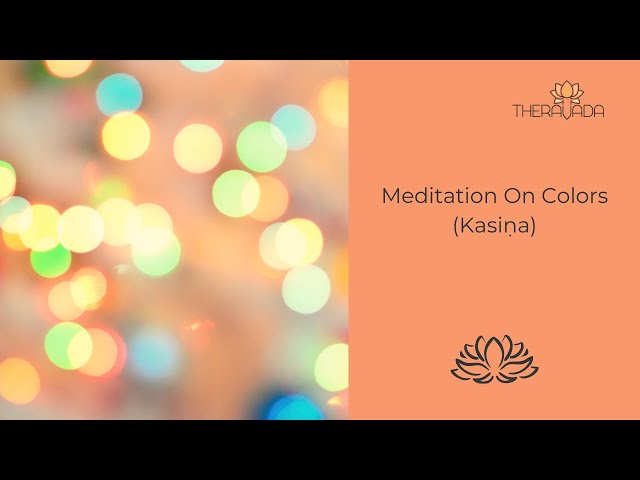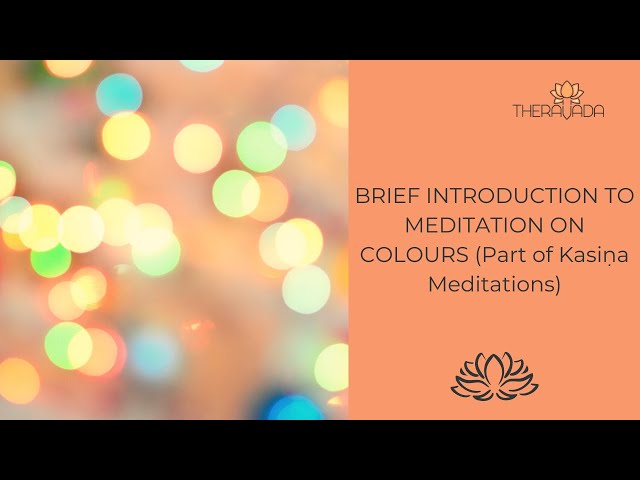
Kasiṇa Meditation on Colours
Kasiṇa Meditation on Colours
This meditation, which was taught by the Buddha in several of his discourses, mostly suits people with a visual perception, who thus find it easy and simple to focus on a colour in order to develop mental concentration (samādhi).
Kasiṇa, which means a complete, whole disc, is the name of a simple external round disk that is used as a visual focus point, so as the meditator can produce and develop concentration, which could also lead to the attainment of the 4 absorptions or ecstasies (jhāna, Sanskrit: dhyāna).
It involves the concentration of one’s full and undivided attention, first with eyes opened, by gazing at one visible object as a preparatory image, e.g. a monochrome disc at some distance, until one manages to perceive, even with eyes closed, a mental image. By concentrating on this mental image over and over again, an illuminosity is created and as a result, one can achieve high degrees of concentration.
Kasiṇa meditation is a common type of tranquility or serenity meditation (samatha). For a number of reasons, the meditation practice using Kasiṇa objects has not been very known in the West. One of the reasons may be that it is not easy to find qualified teachers who have had experience with the method.
As a forest monk, Bhante Nyanadassana has extensively practised Kasiṇa meditation, following the Buddha’s recommendation to his disciples. He is thus qualified to explain this method and guide its practice.


